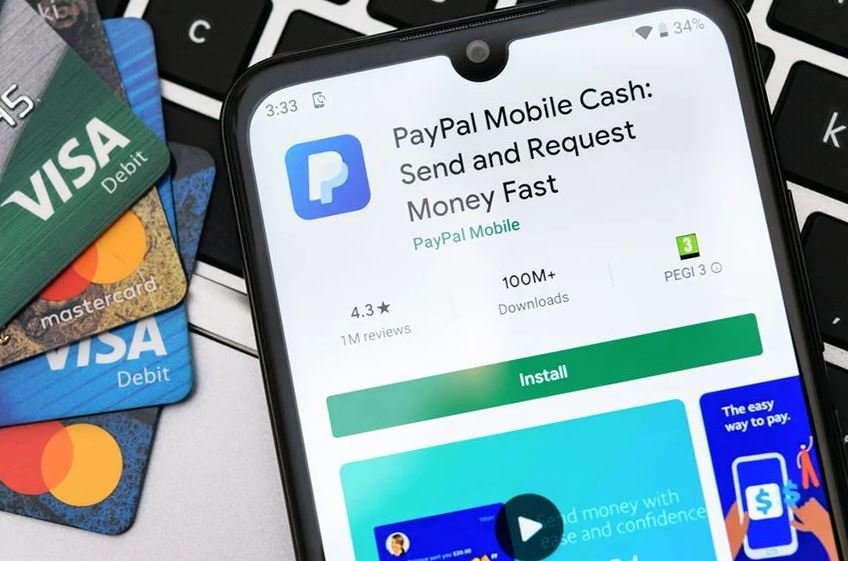Freelance writers, Consultants, and Service Technicians have different workflow processes. This can make invoicing clients a complete nightmare since it’s one of the most important parts of your business. If you want to succeed as a freelancer, the invoicing process is essential. You need to put in place a system where your invoices are sent out on time and in an orderly manner.
Sending an invoice to your clients doesn’t have to be a big, scary thing. You must ensure you include the correct information, do it in a simple but professional-looking format, and send it via the proper letterhead and medium. After that, all you need to do is wait for that sweet client’s money.
In this article, I’m going to give you a step-by-step guide on how to send an invoice to your clients to ensure a smooth and stress-free transaction.
Creating invoices as a freelancer has several advantages. Clients want a great experience when they work with you and professional-looking invoices make up a core part of every service. Invoices are a simple way to keep track of and document your finances. Almost every client’s operation includes some form of an invoice. As a result of prompt invoice creation and delivery, you and your client will benefit from a more efficient workflow.
Invoices enable you to get paid as they provide your clients with the information they need and can also include payment choices, such as cash deposits, Paypal, crypto, or credit card. You should also see our guide on the best ways to receive money as a freelancer.
But how can you send an invoice as a freelancer? Before you get on with it, let us consider the elements a good invoice should have.
What Should Be Included In A Freelance Invoice?

A freelancer’s invoice is the final touch in a working relationship. Due to the document’s finality, you must cover your bases and include all pertinent information. To make creating your freelancer’s invoice easier for you, we’ve outlined what you should include in an invoice for freelance work:
1. Captivating Headings
A professional header with your company name and logo is an excellent place to start with your invoice. You can use your name if you don’t have a business name or logo. To ensure that the name can be read, use a legible font and size.
2. Contact Information
There must be your name and phone number on the invoice. Included are your email address, phone number, street address, and website URL, among other things. Depending on the free invoice template you pick, the location of your information may differ from the ideal at the top right or left corner of the invoice.
3. Information about the Client
Include your client’s name and contact information in the next step. The client’s name, email, phone number, physical address, and website address should be mentioned.
4. The Invoice Number
One of the most important aspects of a freelance invoice is the invoice number, which serves as a unique identifying ID. Your client would type the invoice number into the database if they had to discover your bill among many other bills. Make sure the invoice number is prominently displayed on your invoice.
To avoid confusion, keeping your invoice numbers sequential is a good idea. “1000” might be a starting point for all your bills. “10001,” “10002,” and so on are acceptable invoice numbers.
5. Transaction Dates
The dates are yet another essential part of a well-done invoice. The following dates should be noted on an invoice:
- A bill’s issue date is referred to as the “date of preparation.”
- The date by which the client is required to pay the bill.
6. Detailed Account of the Services Provided
A client’s invoice is an official record of the services you’ve rendered to the individual. Each service you provided should be listed separately on the invoice, along with its associated cost and the total sum due. Providing your client with this information will help them better understand their bill.
7. Terms & Conditions of Payment
If you accept cash, check, debit or credit card, or any other method, mention it in the final paragraph of your ad. The terms and conditions of payment should also be included. If the customer does not pay the invoice by the deadline, will you levy a late fee? If so, how much in late fines will you impose? Is there a discount if the invoice is paid by a specific date? Include all of the terms of payment clearly and concisely.
Different Formats Used for Freelance Invoices
One of the most common questions I get from freelancers is: “How do you create a freelance invoice?” But a freelance invoice isn’t just a single document, there are different invoicing formats that you need to be familiar with.
There are a lot of different kinds of invoices that you could be required to send out to your customers. Let’s talk about the many types of invoices, as well as their functions and the appropriate times to submit them.
1. Interim Invoice
You must provide an interim invoice when requesting interim or progress payments for substantial projects. This type of invoice is also characterized as a progress invoice. Imagine that you are now engaged in completing a project that will cost a total of one thousand dollars and will take you five months to finish. You can send monthly invoices of $200 each month as an alternative to sending a final invoice for the total amount of $1000 after five months have passed.
2. Due Invoice
For a customer that delays payment until the absolute last possible moment, a reminder in the form of an already overdue invoice can be pretty helpful. You can send the same invoice with an updated due date or create a new invoice and add the late fee to it.
3. Final Invoice
After completing a project, you are responsible for sending the final invoice. If you bill your customers on a per-project basis, and each project you work on takes less than a month to complete, you are required to issue a final invoice soon as the task ends.
4. Recurring Invoice
When you need to charge your customers for continuous services, you can do so with the help of a recurring invoice. Imagine that you charge a set amount per month for your marketing services. You can automatically bill the same amount each month by using a recurring invoice. Recurring billing is a feature that all subscription-based organizations utilize.
5. Proforma Invoice
Because it does not contain a request for payment from the customer, a proforma invoice is not considered an open invoice. It functions as a pre-invoice and lists the services you will be delivered, the prices for those services, and the terms under which they will be paid. This is helpful for projects that require deposits, costs to be paid upfront for materials, and projects with a significant budget.
Additionally, pro forma invoices are utilized by global projects to assist in the preparation of shipments for customs declarations. Your client will have a much better understanding of the project’s total cost after reviewing the pro forma invoice.
Handy Tips Freelancers Can Use When Sending An Invoice To A Client
It’s important to send invoices to your clients on time and in a professional manner. It’s also important that you prepare the invoice so that it is error-free and easy for your client to understand. Here are some tips to help you make sure that your invoices are error-free and easy for clients to understand:
1. Your invoices should be checked before you send them
One of the most common reasons for late payments is invoice inaccuracy. Sending an invoice is a routine occurrence if you analyze it thoroughly. Verify that you are not invoicing your client for more or less than the exact amount on your invoice. To ensure that your invoice seems to be of the highest quality, run a grammatical check.
2. Don’t Hold Back from Sending Invoices
It can be difficult to ask your client to pay, but it is a necessary step in the process. Your right is to ask for what is legitimately yours after you have given your best effort and done what the client requested. As a result, don’t hesitate to submit invoices.
It’s also a good idea to send your bills as quickly as possible. Because issuing an invoice too quickly could make them appear pushy, many independent contractors choose to wait a few weeks before delivering an invoice. When your client confirms their satisfaction with your work, submit an invoice to them immediately.
3. Send Invoices That Are Well Written Using Templates and Tools
Making an invoice by hand takes time and resources, and is prone to mistakes. Manual invoice creation can cost anywhere from $10 to $200. Alternatively, you could use an invoice template or invoice generator to speed up and streamlines the billing process.
Maintaining track of several invoices can be hard if you submit them to multiple clients each month. When it comes to invoicing, Indy’s Invoicing Tool is the best option. Automating and optimizing the entire invoicing process saves you time and money.
You can also reduce profit leakage by using expert tools to ensure no discrepancy between the invoice price and the actual pricing.
4. Be Courageous in Following Up
It’s time to face the facts. When it comes to paying payments, specific customers might be demanding. Payment delays are common, and they might be caused by real reasons or by a lack of motivation. To maximize their chances of getting paid, freelancers should set up a follow-up routine.
Sending a reminder at least 24 hours before the final deadline is ideal. Send a past due invoice as soon as the due date has passed if the customer does not pay. A strong cash flow is just as vital as maintaining good relations with your customers, so be careful not to be overly aggressive when billing them.
5. Provide a Variety of Payment Options
Lack of payment choices is another typical cause for customers not to pay. To illustrate, let’s say that you only take PayPal, but your client does not utilize PayPal. Be sure to include a variety of payment options, including PayPal, Bank to bank transfer with Stripe, or Card of payments.
6. Offer Bonuses for Paying in Full Early.
It is possible to use a variety of methods to persuade your customers to pay you on time. Offering early payment incentives has shown to be the most effective strategy. As an example, if the client pays the invoice before a specified date, you can offer a flat 10% discount or a discount on the following payment.
In addition, don’t be afraid to impose late payment penalties on your customers to encourage them to pay before the deadline. If you want to make it easier for your customers to pay their invoices, you can create monthly payment schedules for them.
Your ability to get paid on time is primarily determined by the frequency with which you send invoices to your clients. If you send invoices that are correct, professional, and on time you stand a chance of receiving payment by the due date. Free templates and invoicing tools help freelancers streamline their invoicing process.
Many freelancers spend too much time batching receipts and sending invoices. As mentioned above, this is inefficient and can cause problems further down the line if you forget to chase up invoices that haven’t been paid. Even if you have separate software to track payments and manage your invoices, the guide presented above on how to write and send an invoice that will make it as easy as possible for clients to pay what they owe you.








